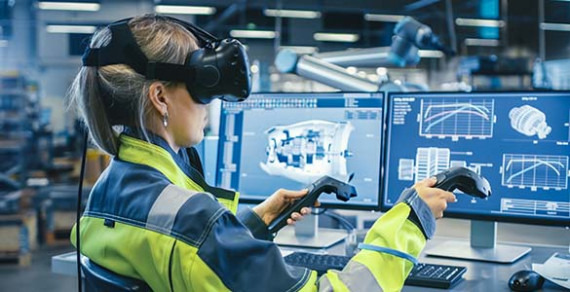Decision-Making for Emerging Technologies

1. Deciding about emergent technologies
Taking decisions about emerging technologies can be enhanced by decision-support tools such as scenario planning, roadmapping, and portfolio matrices, while Technology Intelligence systems keep organizations updated on emerging tech trends. Nevertheless, decision-makers face cognitive challenges from the complexity and uncertainty of these decisions.
How do digital tools like Augmented and Virtual Reality (AR-VR) and Artificial Intelligence (AI) help reduce the cognitive load and uncertainty associated with strategic technology decisions?
- How do managers interact with AI-tools? (Constanze Leeb) - This project is part of the EINST4INE consortium and receives funding from the EU Marie Sklodowska-Curie Innovative Training Networks (ITN) scheme.
- How does VR affect cognitive processes in Strategic Technology planning? - (Nicola Felicini) This project is part of the EINST4INE consortium and receives funding from the EU Marie Sklodowska-Curie Innovative Training Networks (ITN) scheme and industry.
- How does consensus on emergent technology unfold? (Pete Jha) - This project receives funding from RADMA
- How do digital visual tools affect the integration of multiple perspectives in technology management decisions? (Bethan Moncur) - This project is part of the AgriFoRwArdS CDT and receives funding from the EPSRC and industry
- How does increasing the help of AI affect our perceoption of control? (Dr Diletta Tosetto, University of Padova)
2. Decisions in emerging technologies
At DM-ET, projects examine historical corporate decisions on implementing new technologies to identify the conditions, strategies, and configurations that led to optimal and sustainable outcomes. For example, research on how companies employ open innovation to acquire emerging technologies and pursue sustainability. Current projects include:
- 20+ years of Open innovation: how have practices evolved? (Alessandro Caterina, in collaboration with the Politecnico di Milano)
- How do green practices support innovation? (Irene Piccaluga, in collaboration with the Politecnico di Torino)
- How do companies gain value from AI? (Pradeep Debata) - This project is supported by CDT EPSRC
- How did gene therapy firms balance innovation modes during crises? (Johannes Wolff) - This project received funding from the Stiftung der Deutschen Wirtschaft
- What are the differences between co-onwed and single applicant patents? (Dr Sunhye Kim) - This project is in collaboration with Dongguk University (Kr)
- How does the entrepreneurial innovation process unfold in makerspaces? (Dr Valeria Dammicco). This project has been supported by CDT EPSRC and RADMA
- Modeling the value of IoT for mass customization – This project received support from Pitch-In









